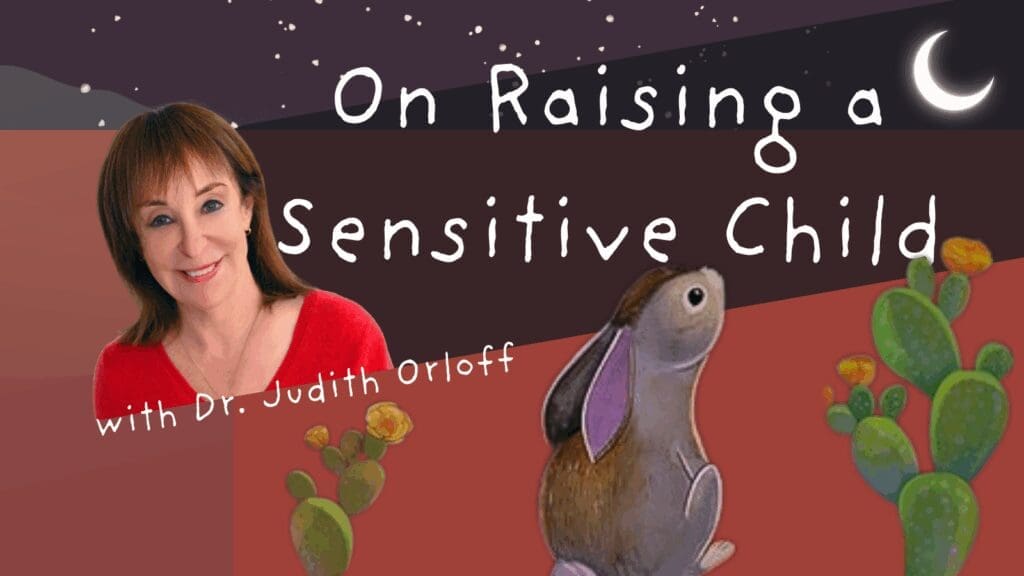A Book For Sensitive Children (with Judith Orloff)

Other Platforms Spotify | RSS | More Destinations
In this episode of The Gentle Rebel Podcast , I speak with psychiatrist and author Dr Judith Orloff about her new book, The Highly Sensitive Rabbit . She wrote it to help sensitive children, their parents, and educators see sensitivity as a natural trait rather than a problem to be solved. She describes it as an invitation to reconnect with the sensitive inner child within each of us; the part that remembers how to play, imagine, and wonder.
Rediscovering the Magic of Life
Life can easily become overly serious, mundane, and disconnected from its natural magic. Judith’s story sets out to remind us to stay in touch with the loving, curious, and deep parts of ourselves. Creativity, she says, begins when we release our expectations and allow things to unfold. Writing a children’s book challenged her to express complex ideas in short sentences, paired with illustrations (by Katy Tanis) that speak directly to the heart.
It’s a lovely example of trying new ways to communicate familiar truths. How would you explain your favourite ideas if you were talking to a five-year-old?
Reading the Book to People
Judith often read The Highly Sensitive Rabbit aloud in different settings to see how people responded. This wasn’t a formal research process, but a natural extension of her curiosity. It was a way to sense how the story landed with children and adults alike.
What Do You Love to Do?
At the heart of the book lies a simple question: What do you love to do?
Through the character of Aurora, a gentle rabbit who prefers quiet and reflection to the boisterous games of her siblings, Judith highlights the importance of honouring individual needs. Aurora shows what it looks like to follow her own rhythm, even when others don’t understand.
This is an invitation for sensitive children (and the adults guiding them) to trust intuition and stay close to what feels true, even when it seems different from the norm.
Opening Up Conversation Instead of Judgement
In one scene, Aurora’s mother worries about her spending too much time alone. Her siblings complain, “She cries all the time.” Their reactions mirror common misunderstandings about sensitivity.
It’s easy to assume that solitude means loneliness, or that tears signal weakness. However, without genuine communication, we cannot determine whether someone’s withdrawal is a healthy choice, meeting a need, or responding through fear. Judith’s story reminds us to stay curious rather than judgmental; to ask, listen, and support instead of prescribing what “should” be.
Supporting a sensitive child means helping them identify their needs, manage their emotions, and develop simple strategies to cope with overwhelm.
Learning to Care for Yourself
Judith offers suggestions for children (and adults) to manage big feelings and model healthy boundaries:
- Take a slow breath when you feel stressed.
- Step away before speaking when you’re upset.
- Try a short three-minute meditation: close your eyes, focus on something beautiful, and take a few deep breaths.
These practices cultivate self-awareness early in life, enabling children to grow up knowing how to take care of themselves.
The Bigger Vision
The Highly Sensitive Rabbit expresses Judith’s wider mission to equip highly sensitive people with tools for thriving in an overstimulating world. When children learn early that their sensitivity is natural, they no longer need to define themselves by it later. It simply becomes part of who they are.
Knowing You’re Highly Sensitive Is the First Step
I asked Judith if there are plans for a sequel. It would be interesting to see Aurora explore her sensitivity through different experiences, applying it through friendships, challenging current events, and creativity. Many adults who discover their sensitivity have that same question: now what? Recognising it is one thing; integrating and normalising it is something else.



